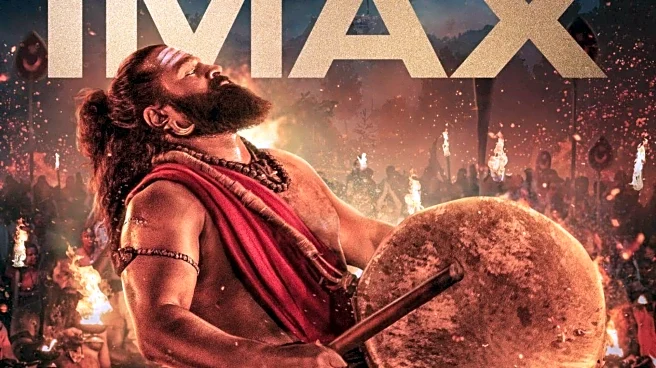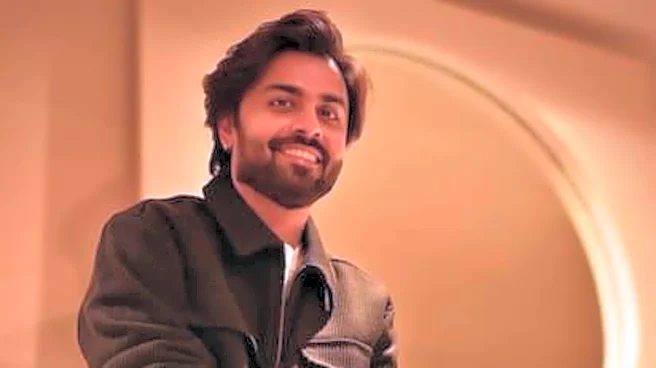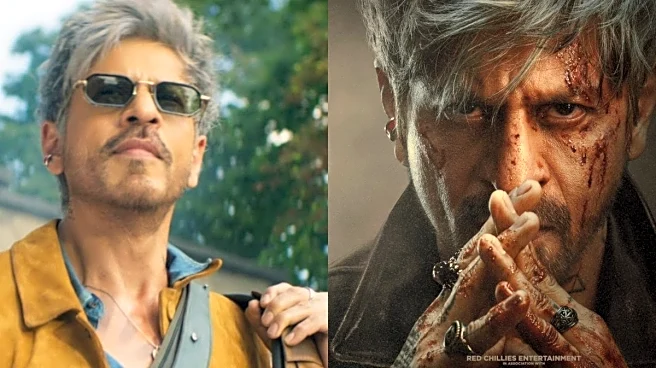What is the story about?
Of the five highest-grossing Hindi films last year, three were horror. Amar Kaushik’s Stree 2 emerged as the biggest blockbuster of 2024, raking in an unprecedented ₹875 crore worldwide. Anees Bazmee’s Bhool Bhulaiyaa 3 bagged the second spot, totalling a whopping ₹424 crore (global gross). Meanwhile, Vikas Bahl’s Shatiaan came in fifth with an impressive ₹211 crore.
At number eight was Munjya, a surprise hit that grossed over ₹132 crore globally. Forget the entire genre of horror, within this year alone we’ve had three vampire films so far, albeit in different languages. Aditya Sapotdar’s splashy Hindi horror comedy
Thamma, Ryan Coogler’s blistering Hollywood feast Sinners and Dominic Arun’s magnificent Malayalam-language superhero fare Lokah Chapter One: Chandra.
There is no denying it anymore that horror is back and with vengeance. At a time when the Hindi film industry is in free fall, it is the only genre that’s thriving, pulling audiences into theaters in large numbers. This massive upswing is hardly surprising though considering how volatile and unpredictable economics and geopolitics have been since the pandemic.
According to a 2023 study published in
The Royal Society, horror films can help us better navigate and process uncertainty. The authors suggest that watching a scary film can offer a tangible and manageable outlet for fear and anxiety. For a few hours, we have a clearly defined demon that we can blame all our worries on, something we cannot do for real-life troubles that are beyond our immediate control.
The study argues that interacting with controlled fear can be beneficial. Horror films, it suggests, act as a safe environment for the audience to practice probable responses to serious threats. This concept, called morbid curiosity, proposes that people seek out scary media to learn about potential dangers and how to handle or avoid them in real-world situations.
We are instinctively drawn to a “Goldilocks zone” of challenge—situations that are neither too easy nor overwhelmingly complex. According to researchers, horror entertainment is carefully crafted to place viewers at the centre of this sweet spot. By combining unexpected twists with a familiar narrative structure, horror films create just the right blend of surprise and predictability to keep our brains deeply engaged.
From this perspective, horror movies function as a kind of emotional technology, designed to influence our predictive brains. Even though we consciously know that the monsters in the films aren’t real, our minds still interpret them as exaggerated versions of reality, allowing us to learn from the experience.
Other than providing us with an outlet to deal with our fears and anxieties, horror films also make audiences confront what they are afraid of. Inside a darkened theatre, they lay bare unvarnished, naked truths that are too ugly to be confronted with in broad daylight. Most well-crafted cinematic ghosts are often a stand-in for our cultural rot and moral decay.
Take Sarkata, the headless ghost from Stree 2, for instance. He is the embodiment of male trepidation due to the rise of feminism. The protagonist of Tumbbad (2018) serves as a symbol for rampant greed. Munjya’s elf-like creature’s stubborn disregard for consent, the pro-environment theme of Bhediya, the sibling rivalry of Bhool Bhulaiyaa 2 and the LGBTQ+ narrative of Bhool Bhulaiyaa 3 are all critical cultural commentaries disguised as pulpy horror that tap into something deeper, primal and often unsayable about the experience of being human.
However, its resurgence may be recent but our affinity for horror is as old as time. Take the India of the Nineties and the Noughties, for instance. For a burgeoning populace grappling with the new economic reforms, Urmila Matondkar and Bipasha Basu became the genre’s mascots. They gave a nation in flux a few hours of respite from its rapidly changing reality. Shows such as Aahat and Kya Hadsaa Kya Haqeeqat aired on television for decades enjoying gigantic viewership, especially among at-home women for whom they worked as quick fixes. They gave a palatable, accessible solution to a seemingly unsolvable problem. They helped an entire generation of women escape quotidian mundanity, casual misogyny and domestic frustration.
It’s no surprise that some of the most lasting Hindi film franchises have been horror since the genre lends itself seamlessly to serialised filmmaking. What was once niche is now mainstream. The list is only expanding—Raaz, 1920, Darna Mana Hai, Bhoothnath, Bhool Bhulaiyaa, now the Maddock Horror Comedy Universe that has at least five films in the pipeline in addition to the five that have taken the nation by storm—Stree, Bhediya, Munjya, Stree 2 and the most recent Thamma.
Rising fascism, deepening financial pressures, raging geographical unrest along with growing systemic apathy, unbridled capitalism and infrastructural limbo has turned Indians into Molotov cocktail, highly incendiary with nowhere to channel their rage—except at an imagined beast in a darkened theatre for a few precious hours every now and then. Now wonder we are buying every chance we can get. Who knew we would get to a place so dark and dystopian where horror would not scare anymore but calm fret nerves.
At number eight was Munjya, a surprise hit that grossed over ₹132 crore globally. Forget the entire genre of horror, within this year alone we’ve had three vampire films so far, albeit in different languages. Aditya Sapotdar’s splashy Hindi horror comedy
There is no denying it anymore that horror is back and with vengeance. At a time when the Hindi film industry is in free fall, it is the only genre that’s thriving, pulling audiences into theaters in large numbers. This massive upswing is hardly surprising though considering how volatile and unpredictable economics and geopolitics have been since the pandemic.
According to a 2023 study published in
The study argues that interacting with controlled fear can be beneficial. Horror films, it suggests, act as a safe environment for the audience to practice probable responses to serious threats. This concept, called morbid curiosity, proposes that people seek out scary media to learn about potential dangers and how to handle or avoid them in real-world situations.
We are instinctively drawn to a “Goldilocks zone” of challenge—situations that are neither too easy nor overwhelmingly complex. According to researchers, horror entertainment is carefully crafted to place viewers at the centre of this sweet spot. By combining unexpected twists with a familiar narrative structure, horror films create just the right blend of surprise and predictability to keep our brains deeply engaged.
From this perspective, horror movies function as a kind of emotional technology, designed to influence our predictive brains. Even though we consciously know that the monsters in the films aren’t real, our minds still interpret them as exaggerated versions of reality, allowing us to learn from the experience.
Other than providing us with an outlet to deal with our fears and anxieties, horror films also make audiences confront what they are afraid of. Inside a darkened theatre, they lay bare unvarnished, naked truths that are too ugly to be confronted with in broad daylight. Most well-crafted cinematic ghosts are often a stand-in for our cultural rot and moral decay.
Take Sarkata, the headless ghost from Stree 2, for instance. He is the embodiment of male trepidation due to the rise of feminism. The protagonist of Tumbbad (2018) serves as a symbol for rampant greed. Munjya’s elf-like creature’s stubborn disregard for consent, the pro-environment theme of Bhediya, the sibling rivalry of Bhool Bhulaiyaa 2 and the LGBTQ+ narrative of Bhool Bhulaiyaa 3 are all critical cultural commentaries disguised as pulpy horror that tap into something deeper, primal and often unsayable about the experience of being human.
However, its resurgence may be recent but our affinity for horror is as old as time. Take the India of the Nineties and the Noughties, for instance. For a burgeoning populace grappling with the new economic reforms, Urmila Matondkar and Bipasha Basu became the genre’s mascots. They gave a nation in flux a few hours of respite from its rapidly changing reality. Shows such as Aahat and Kya Hadsaa Kya Haqeeqat aired on television for decades enjoying gigantic viewership, especially among at-home women for whom they worked as quick fixes. They gave a palatable, accessible solution to a seemingly unsolvable problem. They helped an entire generation of women escape quotidian mundanity, casual misogyny and domestic frustration.
It’s no surprise that some of the most lasting Hindi film franchises have been horror since the genre lends itself seamlessly to serialised filmmaking. What was once niche is now mainstream. The list is only expanding—Raaz, 1920, Darna Mana Hai, Bhoothnath, Bhool Bhulaiyaa, now the Maddock Horror Comedy Universe that has at least five films in the pipeline in addition to the five that have taken the nation by storm—Stree, Bhediya, Munjya, Stree 2 and the most recent Thamma.
Rising fascism, deepening financial pressures, raging geographical unrest along with growing systemic apathy, unbridled capitalism and infrastructural limbo has turned Indians into Molotov cocktail, highly incendiary with nowhere to channel their rage—except at an imagined beast in a darkened theatre for a few precious hours every now and then. Now wonder we are buying every chance we can get. Who knew we would get to a place so dark and dystopian where horror would not scare anymore but calm fret nerves.
Do you find this article useful?
/images/ppid_59c68470-image-176278011288191495.webp)

/images/ppid_a911dc6a-image-176258610574067651.webp)
/images/ppid_a911dc6a-image-176250203030788775.webp)
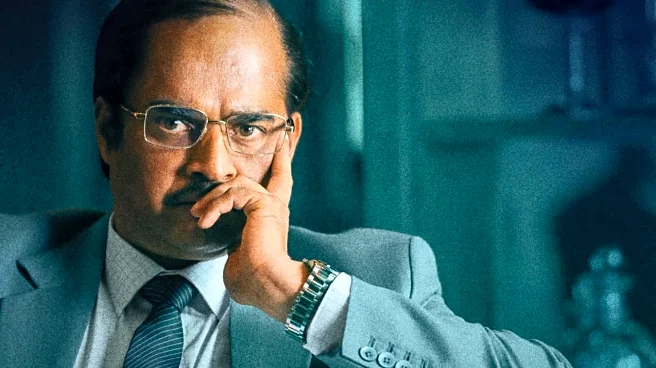
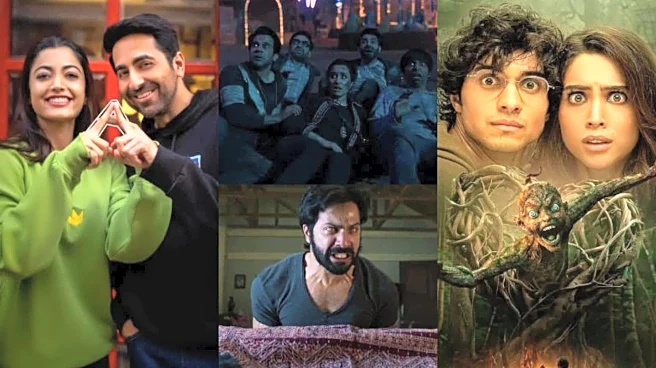

/images/ppid_a911dc6a-image-176276452937811429.webp)


/images/ppid_59c68470-image-176269754906833774.webp)
